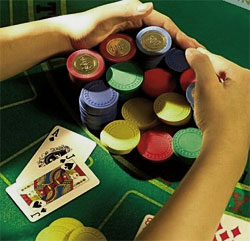 Blackjack is one of the simplest and most popular types of online casino games out there. Even though there are a few different variations of the game, the basics are more or less the same.
Blackjack is one of the simplest and most popular types of online casino games out there. Even though there are a few different variations of the game, the basics are more or less the same.
There are a lot of different strategies used by players, but everybody has their own style of playing. Whether you?re a newcomer to online blackjack or a seasoned pro, there are some tips that might help you out.
- Learn the rules of all the online blackjack games you?re going to play. You should then practice and play for free before you?re comfortable with the idea of playing for real money.
- You should come up with a playing limit or budget and make sure you stick with it. You?re going to have good days and bad days so know when to call it a day.
- Check out all of the online tournaments, promotions, and bonuses that are offered at various online casinos. This will help you get the most out of your money.
- It?s important that you don?t give out any of your personal account information to anybody that you don?t know and trust.
- Try to learn all of the terms related to the online blackjack games so you understand what?s happening during the action.
- Withdraw at least half of your winnings after you win a big amount. This will help stop you from playing it right away and you?ll leave the game with some winnings.
- Try to get your cards as close to 21 as possible instead of trying to beat the dealer. If the dealer has a high card showing don?t let it distract you.
- Don?t forget about betting cycles in online blackjack. You should bet more when you?re winning and less when you?re losing.
- Remember, online blackjack favours the dealer. If you both go over 21, you lose.
- If the dealer has to take a card on hands that are 16 and lower, you won?t win with less than 17 unless the dealer goes over 21.
- Remember that an ace can be used as either one point or 11 points.
- If your cards total 10 or lower you should take another card as you won?t be in jeopardy of busting. The most you can get is an ace to total 21, which of course is what you?re aiming to do.
Written by Alex, a blackjack aficionado who enjoys blogging about her casino experiences. She loves detailing her wins and losses for the amusement and entertainment of others!



